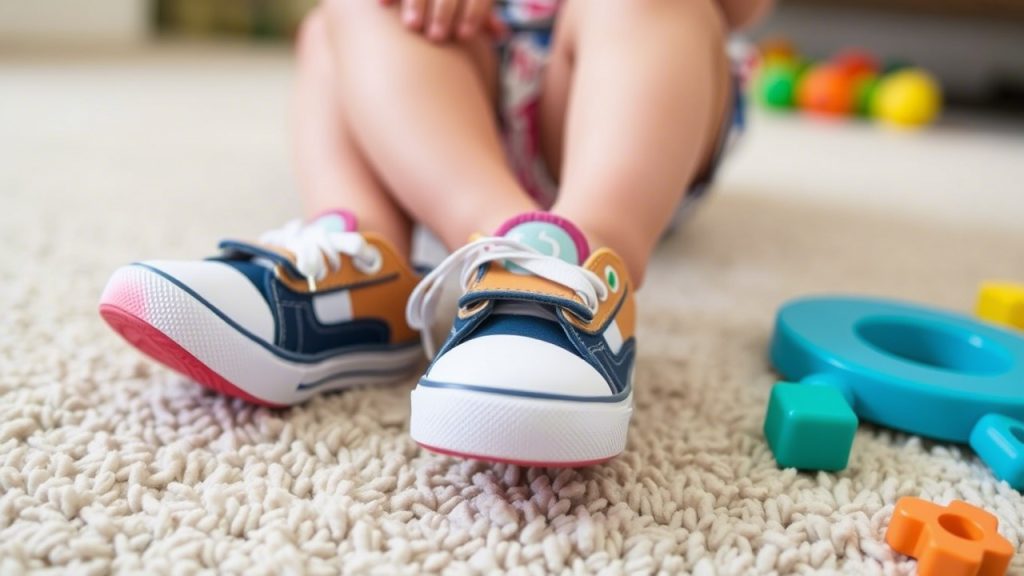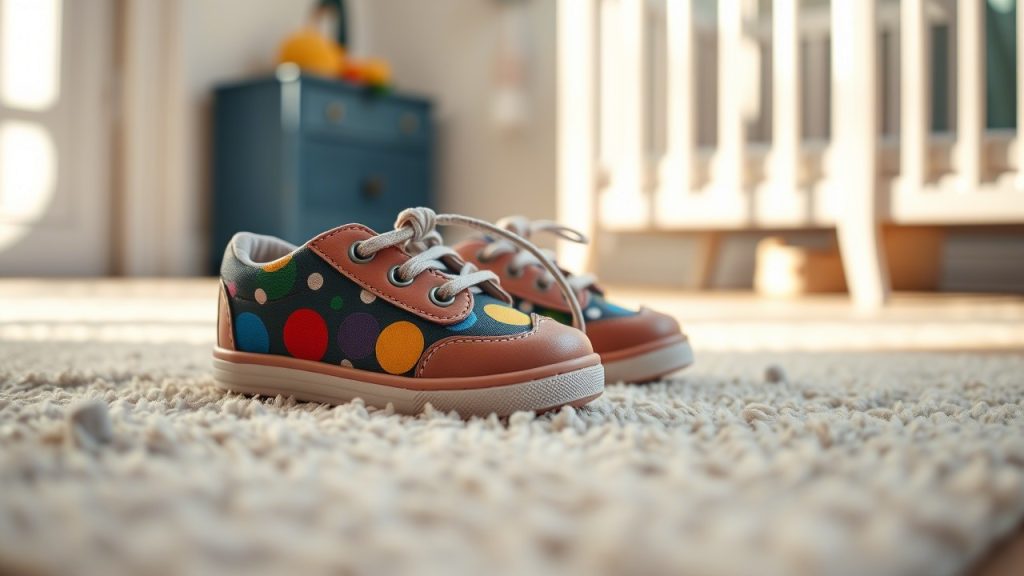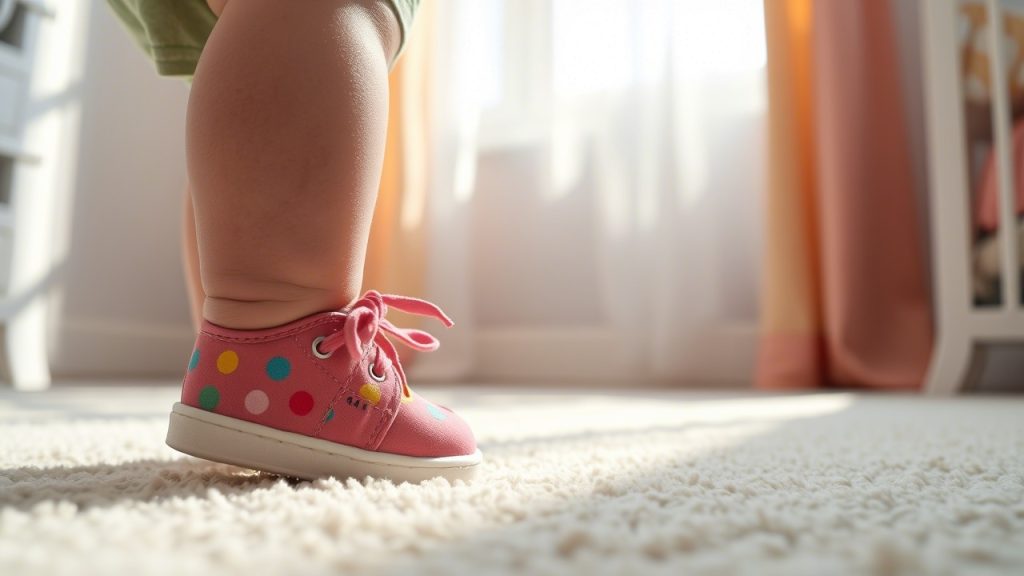When toddlers take their first steps, it marks a milestone filled with excitement and pride. However, not all strides are perfect from the start. Developing a proper gait (stride) is crucial for a child’s balance, coordination, and overall body alignment. One major factor that influences a toddler’s walking style is the type of shoes they wear.
We’ll explore 6 of the best toddler shoe ideas to improve stride, providing you with professional insights on how the right shoes can encourage better walking habits. Plus, we’ve included answers to the 7 most common questions parents have about toddler shoes!
Why Is Stride Important for Toddlers?
Stride refers to how a person walks—their rhythm, length of step, and foot placement. For toddlers, developing a correct stride:
- Builds better posture
- Improves balance and agility
- Reduces the risk of trips and falls
- Helps with muscle development and coordination
- Prevents future joint or back problems
Without proper support from good footwear, toddlers might develop habits like walking on tiptoes, splaying their feet outward, or dragging one leg—issues that can persist if not corrected early.
Key Features That Influence a Toddler’s Stride
Before we dive into the shoe recommendations, here’s what you should prioritize when shopping for toddler shoes to help with stride:
- Flexible Soles: Encourage natural foot movement.
- Lightweight Materials: Allow easier, less clumsy steps.
- Wide Toe Boxes: Let toes spread naturally for balance.
- Good Arch Support: Promotes correct foot alignment.
- Non-slip Soles: Help toddlers grip surfaces safely.
- Secure Fastenings: Keep the shoe snug without restricting movement.
6 Best Toddler Shoe Ideas to Improve Stride
1. Flexible Barefoot-Style Shoes
Barefoot-style shoes are designed to mimic natural walking while offering protection. These shoes allow toddlers to feel the ground beneath them, helping to develop better balance, foot strength, and a natural stride.
Top Pick: Bobux Xplorer Go
- Ultra-lightweight and flexible
- Minimal sole thickness for ground feel
- Easy-on, stay-on design
Why It’s Good for Stride:
Barefoot shoes encourage toddlers to use their toes and arches naturally, promoting a healthier walking style.
2. Lightweight Athletic Sneakers
Once your toddler is running, jumping, and climbing, a flexible yet supportive athletic shoe can make all the difference. Lightweight sneakers allow free movement and encourage an energetic, natural gait.
Top Pick: Nike Flex Runner 2 Toddler Shoes
- Breathable mesh uppers
- Soft, responsive cushioning
- Slip-on fit with elastic straps
Why It’s Good for Stride:
These sneakers provide enough support without restricting natural foot movement, helping toddlers build stride strength and stamina.

3. Shoes with Built-in Arch Support
While not every toddler needs arch support, for some, it can improve foot alignment and prevent overpronation (feet rolling inward), which affects stride quality.
Top Pick: Stride Rite Soft Motion Kylo Sneaker
- Memory foam footbeds
- Flexible outsole
- Certified by the American Podiatric Medical Association (APMA)
Why It’s Good for Stride:
The structured arch support corrects minor gait issues and encourages even weight distribution.
4. Wide-Toe Box Shoes
A wide toe box allows the toes to spread naturally during walking. Cramped toes can throw off balance and make walking awkward or uncomfortable.
Top Pick: Plae Ty Toddler Sneakers
- Customizable fit
- Reinforced toe guards
- Eco-friendly, breathable materials
Why It’s Good for Stride:
Natural toe splay helps with better push-off during walking, improving stride length and fluidity.
5. Orthopedic Corrective Shoes (if needed)
If your pediatrician notices specific gait abnormalities like toe-walking, inward foot rolling, or severe flat feet, orthopedic shoes might be recommended. These shoes provide structured support to gently guide foot and stride correction.
Top Pick: Memo Shoes Corrective Sandals
- Diagnoses and corrects foot posture
- High-quality arch and ankle support
- Durable leather construction
Why It’s Good for Stride:
They actively correct improper walking patterns while allowing comfortable, flexible movement.
6. Breathable Everyday Shoes
Everyday shoes that combine breathability, flexibility, and grip help toddlers walk naturally without overheating or discomfort.
Top Pick: See Kai Run Stevie II Sneakers
- Wide opening for easy wear
- Flexible rubber outsole
- Machine washable
Why It’s Good for Stride:
Lightweight, breathable shoes mean less fatigue, promoting consistent, confident strides throughout the day.

Common Mistakes Parents Make When Buying Toddler Shoes
- Choosing shoes that are too stiff: Restricts natural foot movement, impacting stride.
- Buying shoes too big: Extra room causes instability and awkward walking.
- Ignoring material quality: Non-breathable materials can cause discomfort and lead to uneven walking habits.
- Not checking fit regularly: Toddlers’ feet grow quickly—sometimes half a size in just 2 months!
Signs Your Toddler Might Need Better Shoes
Watch for these warning signs that indicate your toddler’s shoes might be affecting their stride:
- Frequent tripping or stumbling
- Toe-walking beyond 18 months of age
- Ankles rolling inward or outward
- Complaints about foot pain
- Worn-out shoe soles unevenly
If you notice any of these signs, it may be time to re-evaluate your child’s footwear choices.
7 Frequently Asked Questions
1. How often should I check my toddler’s shoe size?
You should check every 2–3 months. Toddlers’ feet grow quickly, and wearing outgrown shoes can harm their stride and comfort.
2. Are barefoot shoes safe for toddlers?
Yes, barefoot-style shoes are safe and often beneficial. They encourage natural walking patterns, foot strength, and balance when made properly with soft, protective materials.
3. Should I choose high-top or low-top shoes for improving stride?
Generally, low-top shoes are better for healthy toddlers because they allow freer ankle movement. High-tops may be recommended for specific medical conditions like weak ankles.
4. How tight should toddler shoes be?
Shoes should fit snugly without squeezing the foot. There should be about a thumb’s width of space between the longest toe and the front of the shoe.
5. Can bad shoes really affect a toddler’s walking?
Absolutely. Poorly fitting or low-quality shoes can cause poor gait patterns, posture issues, and foot discomfort, which might require medical intervention later.
6. What materials are best for toddler shoes?
Natural, breathable materials like leather, canvas, or high-quality mesh are ideal. They keep feet cool and dry, improving comfort and stride.
7. When should I see a doctor about my toddler’s walking?
If your child still tiptoes after age 2, drags a foot consistently, or shows signs of pain or imbalance while walking, it’s time to consult a pediatrician or pediatric podiatrist.
Final Thoughts – The Right Shoes Make a Big Difference
Helping your toddler develop a healthy stride starts with choosing the right shoes.
Remember, you’re not just buying footwear—you’re investing in your child’s posture, coordination, and lifelong comfort. Prioritize flexibility, breathability, lightweight materials, and good fit.
Take the time to observe your child’s walking habits regularly and be ready to adapt their shoes as their needs grow. With the right pair of shoes, your toddler will enjoy confident, happy steps, setting the stage for a lifetime of strong, healthy movement!





